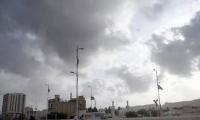Petrol prices in Pakistan have increased by Rs6 per litre, and diesel prices have remained unchanged. In dollars terms, the petrol price increase is 14.67 per cent and that of diesel prices is 11.8 per cent. In the rupee terms, the increase in petrol prices is 7.59 per cent and the decrease in diesel prices is 0.21 per cent. No GST has been levied on the two petroleum products.
In this fortnight, India has reduced its petrol price by 10.98 per cent, and Bangladesh by a drastic 38.36 per cent, but petrol prices in the US have increased by 9.9 per cent. With regard to diesel prices, these countries have decreased the prices – Bangladesh by 29.7 per cent, India and Pakistan by less than one per cent, and the US by 4.42 per cent.
South Asia’s high-flyer, Bangladesh, which has the distinction of the highest per capita income and economic growth rates in the region, has been undercharging oil, gas and electricity. This is being done so that it could increase its exports. However, energy subsidies have caused a number of problems, compelling Bangladesh to knock on the IMF doors.
India is charging higher prices and has not suffered financially yet, although there are slogans in India for free electricity and LPG for the poor. Many rich and poor countries are suffering under the burden of high energy prices and low supply. The poor, of course, is suffering more, and this calls for a balanced pricing and taxation policy.
People in Pakistan were expecting that since there was a dip in international oil prices and some improvement in the dollar-rupee exchange rate, petrol prices would come down. So why didn’t the prices come down? A possible explanation is as follows: First, the petroleum development levy (PLD) has increased by Rs10 per litre; this is in accordance with the IMF agreement under which the PLD has to be increased by Rs10 per litre every month until it reaches Rs50 per litre.
Second, the new prices are based on weighted-average prices and exchange rates of the last 15 days. In our case, both variables have improved in a gradual fashion, hence the 15-day average increase is lower than the improvement made in recent days, especially in the case of the exchange rate.
Third, although people are monitoring crude oil prices, it is not necessary that petrol and high speed diesel (HSD) prices will vary by the same ratio, at least in the short term.
Fourth, comparisons may only broadly indicate the differences and cannot accurately explain the factors behind these difference as there are location and other variables that affect prices, which may not be reflected in comparator reference prices.
Ironically, there appears to be a consensus among the two major parties – the PML-N and the PTI on price reduction. The PDM government, however, has its contractual and revenue limitations. In this situation, a search for price reduction may be welcomed by all sides.
The government of Pakistan does have other options other than playing with the petroleum levy and sales tax, and they are custom duties on crude oil and finished products and income (not collected) from the windfall profit levy (WPL) on local crude oil prices.WPL collection can be adjusted to reduce prices.
A Rs17-20 per litre custom duty is charged on petrol and diesel. India has charged WPL on crude prices above $40 per barrel this year; in both the countries, local crude oil does not cater to more than 20 per cent of the total requirements. There are transfer prices issues as well; high prices reflect in the PLS of public-sector oil companies and yield corporate taxes.
There is some sort of confusion and controversy regarding customs duty on finished products and crude oil. Customs duty on crude oil is charged in prices of refineries and the duty is charged to PSO on finished products. Should PSO be paying more duties? Customs duties on refineries’ crude oil imports are an equalizer to the high import prices of PSO.
If customs duty on crude oil is meant to give price advantage to local oil refineries, it should be known that they have already been making heavy profits in the wake of unduly high gross margin built in the imported petroleum products pricing. There is a case for pruning oil refineries’ margin, although they suffered earlier when oil prices were low. But under extremely high prices, it may be desirable.
There are proposals for an S-curve under the cost-plus regime where there is price ceiling and floor pricing provision. Simply speaking, product prices may not cross over an upper limit which may hurt consumers and the economy, and prices may not be allowed to go below the assigned lowest level below which it may hurt producers.
PSO is a price leader and controls more than 50 per cent of the domestic market. Improvement in PSO efficiency can improve the entire sector. Allegedly, excessive premiums over reference prices are charged.
Reportedly, there were some Public Procurement Regulatory Authority (PPRA) rules which barred innovations in procurement. PPRA rules do not allow negotiations, and it is the price negotiation which helps break the cartel. Pakistan must seek help from international advisors with negotiations. It is not enough to open the tender envelopes. If you can’t win them join them. Joint ventures (JVs) with international suppliers might be helpful, especially with China as it is benefiting from cheap oil from Russia and Iran.
Talks on deregulating the oil sector are still going on despite having observed the catastrophe the market manipulation of suppliers and supplier countries caused. Why should a producer produce more to earn profit when he can do so by limiting production and charging more? US President Joe Biden has also pointed out this aspect of the market. We will take this up in a later opportunity.
There are conflicting views on the oil regime prevailing in the country. The issue has become even more complicated due to lack of transparency in releasing price information. Partial and dispersed data is available because of which deeper analysis is not possible.
It is advised that policymakers analyze and look into opportunities for price reduction, especially when high prices are causing political and social problems. There is no use earning revenue and then losing it to low exports and unstable exchange rates.
The writer is a former member of the Energy Planning Commission. He can be reached at: akhtarali1949@gmail.com
Most recently, US presidential elections demonstrated how AI has amplified partisan split
Few years ago, Pakistan ranked as fourth-largest freelancer market globally, with potential to become number one
Arts Council Karachi celebrated its 70th birth anniversary at inaugural session with big cake
There are over 11 million Pakistanis settled abroad, out of which around six million work in Gulf and Middle East
This year alone, US Treasury would have to roll-over $10 to $14 trillion in maturing short-term debt
Tear gas no longer marks just protest sites; it paints entire cities as battlegrounds but then again, PTI did it first







